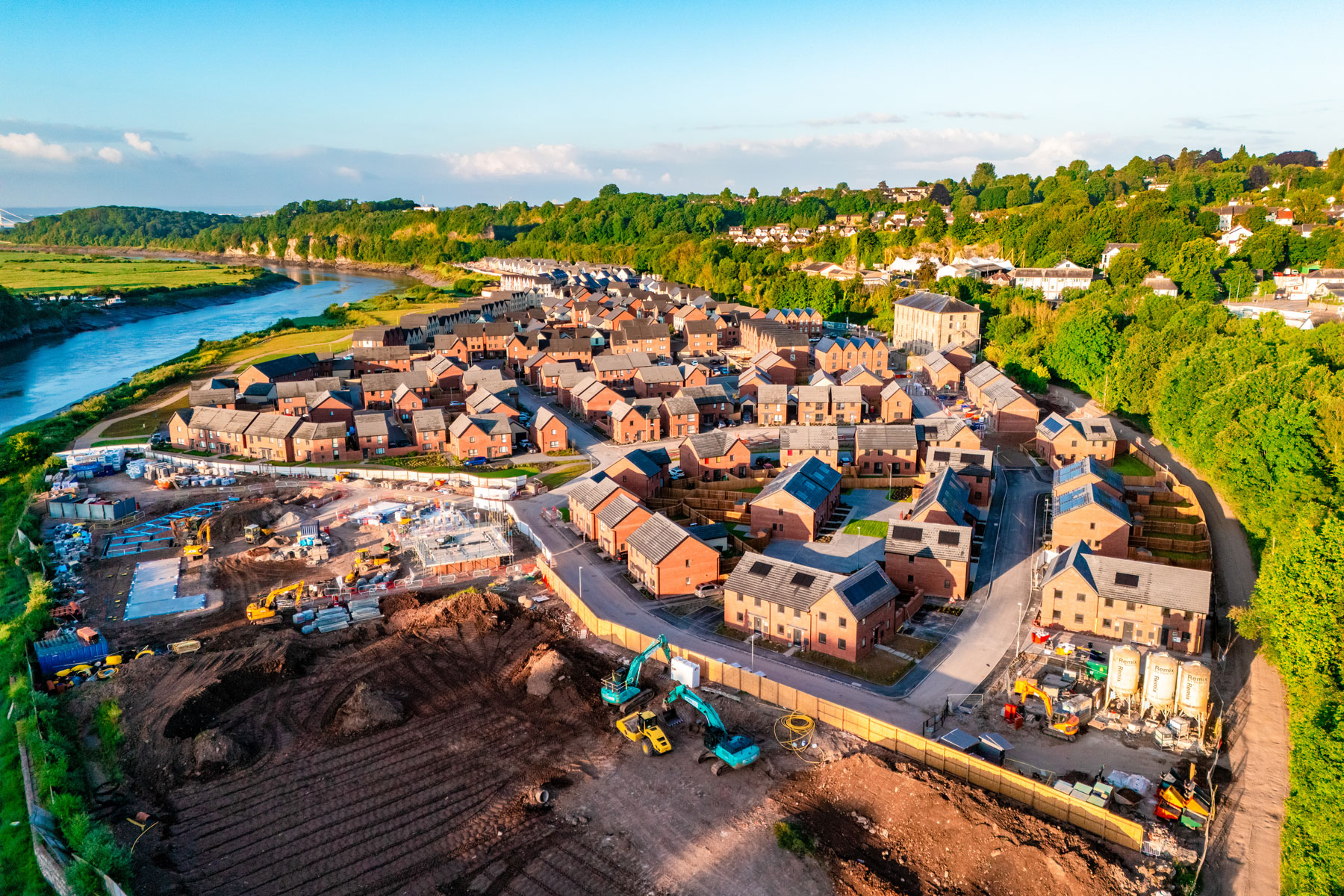Since February 2024, ensuring Biodiversity Net Gain (BNG) has been a statutory prerequisite for most planning applications in England. Introduced by the Environment Act 2021, the BNG regime requires new developments to deliver a minimum 10% uplift in biodiversity, secured for at least 30 years. The policy was designed to help reverse the UK’s declining biodiversity by ensuring that development not only mitigates ecological harm, but contributes to nature recovery.[1]
Following a phased roll-out for planning permission under the Town and Country Planning Act 1990, BNG baselines will be extended to Nationally Significant Infrastructure Projects (NSIPs) from November 2025 through amendments to the Planning Act 2008.[2] With implementation drawing closer, and much of the underlying policy still in development, it is an appropriate time to take stock of what we know so far, and consider the implications for NSIP planning now.
What is changing in November?
NSIPs were originally excluded from the Environment Bill due to their “fundamentally different characteristics to other development types”.[3] However, following an independent review of the ‘economics of biodiversity’, the Lords committed to bringing NSIPs within the Bill’s scope.[4]
This was achieved by adding provisions which (once implemented) will require the Secretary of State to refuse applications for Development Consent Orders (DCOs) where proposed developments do not meet the “biodiversity gain objective(s)” in any applicable “biodiversity gain statement”.[5]
Due to the scale and complexity of NSIPs, the Government delayed commencement of the new provisions by two years, to provide NSIP developers time to incorporate BNG into their designs.[6]
Biodiversity gain statements – a closer look
At first blush, the biodiversity gain required of NSIPs largely reflects that of developments approved under the Town and Country Planning Act 1990. The default biodiversity gain objective is that the biodiversity value attributable to a development exceeds the pre-development biodiversity value of the onsite habitat by at least 10%.[7] Likewise, the maintenance period for biodiversity gains will initially be set for a minimum of 30 years,[8] and onsite provision of biodiversity must be favoured over offsite provision or statutory credits.[9]
The NSIP regime differs in the mechanism by which BNG requirements are imposed.
Once enacted, a new Schedule 2A to the Planning Act 2008 will require all applications for DCOs to be decided in accordance with any relevant national policy statement (NPS),[10] which must incorporate a biodiversity gain statement on its first statutory review.[11] Where developments have no associated NPS, or the NPS does not yet provide for BNG, the government may publish a supplemental biodiversity gain statement, subject to consultation.[12]
Primarily, a biodiversity gain statement sets out the biodiversity gain objective for the development type, and prescribes that DCO applications must be determined according to whether the proposed development meets that objective.[13] Biodiversity gain statements must also specify whether and how the objective applies to irreplaceable habitats; specify evidence that must be produced in support of an application; and may confirm how biodiversity value is to be calculated, with reference to a specified biodiversity metric.[14] Though unconfirmed, it has been suggested that Natural England’s Environmental Benefits from Nature Tool and/or Biodiversity Metric 3.0 will be used, initially.[15]
BNG and compulsory acquisition
The Government has responded to uncertainty over whether the new regime will permit DCOs to be used for the purpose of securing BNG. Although its response to the 2022 consultation confirmed that no new compulsory purchase powers would be introduced for this purpose, it did state that the Government (of that day) would:
“…consider providing guidance or reference in biodiversity gain statements that outlines the reasonable alternatives developers should explore to deliver net gain before they consider compulsory acquisition of land.”[16]
This essentially confirmed the ordinary principles of compulsory purchase, that it should be used as a last resort. We expect it will be necessary to show that the promoter has applied the Biodiversity Gain Hierarchy in site selection, as well as made all of the usual reasonable efforts to reach an agreement on purchase.
The point was made more explicitly in updates to the Government’s CPO Guidance (October 2024), which states that “it may be necessary for an acquiring authority to acquire land for BNG purposes”, and refers to the usual conditions for compulsory purchase (e.g. the compelling case in the public interest).[17] Though the CPO Guidance relates to the BNG regime under the Town and Country Planning Act 1990, it indicated that the Government does not intend to create a separate standard for compulsory land acquisition for BNG purposes.
This is reflected in the NPS framework for energy NSIPs. The Overarching NPS (EN-1) states that applicants may seek to acquire land where it is needed to provide “mitigation and landscape enhancement”, with applications to be considered under established DCO principles. The NPS for Electricity Networks (EN-5) adds BNG to the list of legitimate bases for acquisition,[18] and was explicitly relied on in a recent decision approving acquisition of land for this purpose. The decision stated that compulsory acquisition “for the provision and maintenance of the BNG elements of the Proposed Development is consistent with policy and guidance”.[19]
Where is the new policy?
Despite assurances that a biodiversity gain statement would be consulted on in March 2024 and finalised in September 2024,[20] no draft statement has been published. If the Government intends to honour its commitment to apply BNG to NSIPs by November 2025, we should expect to see a raft of revised NPSs (or standalone biodiversity gain statements) published in the coming months.
The Government opened a consultation on three revised NPSs for energy infrastructure on 24 April 2025.[21] The updates are helpful, in that they consolidate and clarify much of what is published elsewhere, but contain no biodiversity gain statements. The overarching NPS for Energy confirms that statements will be published separately for NPSs that are already under review. It is not yet clear how this sits with the Government’s announcement in December that “all relevant” NPSs will be updated by summer 2025.[22]
What should we be doing now?
Though the changes described above have yet to take effect, the policy is clear that DCO applicants should already be accounting for BNG.
The suite of Energy NPSs published since November 2023 “encourage” applicants to use the latest biodiversity metric to calculate BNG outcomes, which “should be presented in full as part of their application”.[23] Meanwhile the Secretary of State “should give appropriate weight” to BNG, and consider what requirements should be attached to any consent to ensure that BNG measures, if offered, are delivered and maintained.[24] The draft revised NPS (April 2025) reiterates these points, and adds that “where possible”, development proposals should seek opportunities to provide BNG, and the Secretary of State should use planning obligations to maximise such opportunities.[25]
Voluntary adoption of BNG – Bramford to Twinstead
The principle that BNG measures “if offered” must be delivered and maintained was borne out in the recent DCO for the Bramford to Twinstead Reinforcement Project.
The National Grid sought consent to reinforce the transmission network between the existing Bramford substation and Twinstead Tee. As part of its application, the National Grid offered to deliver a 10% uplift in biodiversity, in line with a voluntary commitment within its 2021-2026 Environmental Action Plan. The Secretary of State’s Decision Letter (Sept 2024), while noting that BNG was not yet mandatory for the application, supported this proposal, granting compulsory purchase powers to obtain the land needed for the National Grid’s BNG commitment, and requiring that it submit written evidence to demonstrate how the 10% increase would be delivered.
Another lesson to take from this project is that applicants must clearly distinguish between BNG proposals from other proposals for habitat mitigation, reinstatement and compensation.
Key takeaways
- In November 2025, amendments to the Planning Act 2008 will require DCO applications to meet biodiversity gain objectives set out in biodiversity gain statements.
- The default biodiversity gain objective is that NSIPs deliver an increase in the biodiversity value of the onsite habitat by at least 10%, secured for a minimum of 30 years.
- Land may be acquired for BNG purposes alongside the primary purpose of the scheme, but developers must demonstrate a compelling case, following the ordinary principles of compulsory purchase.
- Though BNG is not yet mandatory for NSIPs, it is clear that DCO applicants should account for BNG while NSIP planning. There is a policy expectation that developers seek opportunities to provide BNG, and the Secretary of State will use planning obligations to support this.
- Voluntarily adopting BNG may strengthen an application, but developers must clearly distinguish BNG from other environmental measures, and must evidence the proposed biodiversity gains.
If you need assistance with any of the issues raised by this article, Michelmores has a wealth of experience in land acquisition law, and all aspects of environment, property, planning and strategic land use. Please get in touch with Mark Howard, Fergus Charlton, Helen Hutton, or Adam Corbin, who will be happy to help.
This article is for general information only and does not, and is not intended to, amount to legal advice, and should not be relied upon as such. If you have any questions relating to your particular circumstances, you should seek independent legal advice.
[1] For a detailed overview of BNG, see our Ben Sharples’ contemporary article, “BNG: the basics”.
[2] Environment Act 2021, s 99, Sch. 15(1); Planning Act 2008, ss 103(1A), 104(3) and 105(3)-(4), Sch. 2A.
[3] Defra, Net Gain – Summary of Responses and Government Response (July 2019), p 5.
[4] HL Deb 7 July 2021, vol 813, col 1351; The Dasgupta Review: Government Response (July 2021), paras 2.11-12.
[5] Environment Act 2021, s 99, Sch. 15(1). Planning Act 2008, ss 103(1A), 104(3) and 105(3)-(4); Schedule 2A.
[6] Defra, Consultation Outcome: Government Response and Summary of Responses (Feb 2023), Para 4.3.
[7] Planning Act 2008, Schedule 2A(3)(2).
[8] Defra, Understanding BNG (Feb 2023); DESNZ, Draft: Overarching NPS for Energy (EN-1) (Apr 2024), para 5.4.40.
[9] For more on the Biodiversity Gain Hierarchy, see our articles on Dealing with BNG Land Acquisition Agreements and off-site BNG solutions available to developers.
[10] Planning Act 2008, s 104(3).
[11] Schedule 2A, s 9(2). NPSs must be reviewed at least once every five years (Planning Act 2008, s 6).
[12] Schedule 2A, s 10.
[13] Environment Act 2021, Sch. 15, s 5; Planning Act 2008, Sch. 2A, s 2.
[14] Schedule 2A, ss 7, 8 and 4, respectively.
[15] DESNZ, Draft: Overarching NPS for Energy (EN-1) (Apr 2024), fn 103).
[16] Defra, Consultation Outcome: Government Response and Summary of Responses (Feb 2023), Para 4.3
[17] MHCLG, Guidance on the compulsory purchase process (Oct 2022, updated Jan 2025), paras 212.1-4.
[18] DESNZ, NPS (EN-1), para. 4.1.8–4.1., and NPS (EN-5), para. 2.6.6 (Nov 2023, updated Jan 2024).
[19] DESNZ, Secretary of State Decision Letter (Bramford to Twinstead) (12 Sept 2024), paras 6.15-15.
[20] Defra, The Biodiversity Net Gain Statutory Instruments – explained (Nov 2023), para 3.
[21] DESNZ, Planning for new energy infrastructure: 2025 revisions to National Policy Statements (Apr 2025).
[22] The Prime Minister’s Office, Plan for Change: Milestones for mission-led government (Dec 2024), p 25.
[23] DESNZ, Overarching NPS for Energy (EN-1 (Nov 2023, updated Jan 2024), para. 4.6.7.
[24] DESNZ, Overarching NPS for Energy (EN-1 (Nov 2023, updated Jan 2024), paras. 4.6.3, 5.4.44.
[25] DESNZ “NPS for Energy 2025 Update: Appraisal of Sustainability (Main Report)“, (April 2025), p 136.










